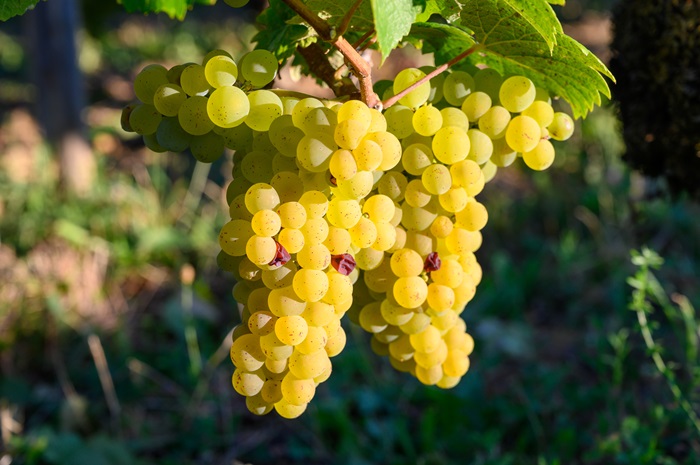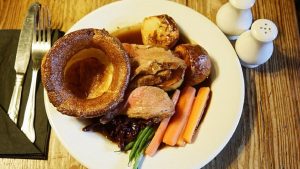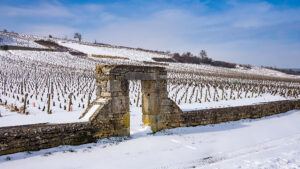
Yellow, green, pink, topped up or not, in barrels or foudres (large-capacity wooden barrels) – Savagnin has a way of leaving even the most seasoned wine lovers scratching their heads. This unusual grape variety, native to Jura (though you may also come across it under the name Klevener in Alsace, a variety of Savagnin Rose), is most commonly associated with Vin Jaune. And rightly so as it is the main architect behind this legendary wine of Jura bottled in 620ml clavelin.
That said, with Vin Jaune accounting for only 2% of production volume in Jura, Savagnin can also be experienced in its more classic, non-oxidative varietal expression – offering a different side to this fascinating grape. In French, this is referred to as naturé, offering a fresher, fruit forward, and aromatic style.
Fleshy, rich and ample, with a distinct hint of chestnut or hazelnut, it offers an incredible sense of comfort when crafted to perfection. This grape variety with its bold character is also a great alternative to Chardonnay which also grows in the region. Unlike its sidekick, Savagnin thrives when topped up (ouillé in French which will be written on labels when this practice takes place) during fermentation, whereas Chardonnay prefers to embrace a thin layer of yeast as part of its maturation.
Savagnin belongs to the Traminer family, and as such, it is thought to have originated in Germany or possibly Hungary, though the exact origins remain somewhat uncertain. In any case, it is said to have reached the Franche-Comté region of France from across the Rhine River. In addition to Alsace, as mentioned earlier, Savagnin is also grown in Switzerland’s Haut-Valais region and in Austria. However, it’s not particularly widespread, accounting for a mere three hundred hectares in Jura (15% of the region’s total vineyard area). This variety has its preferences, favouring marl-rich soils, in particular Lias marls, as seen in Château-Chalon. Its leaves are dark green, round, and of medium size, while the berries are small and plump with thick skin. Savagnin is a late-ripening grape variety, often harvested around two weeks after other varieties.
So, what is Savagnin like?
When it is not topped up, Savagnin displays the distinctive flavours of Vin Jaune, with notes of fresh walnuts and spices. On marl-rich soil, it adopts a slightly smoky, peaty character, while in other cooler regions further north, it develops a distinctive saline and iodine edge. While many non-topped up Savagnin wines are aged for three to four years, Vin Jaune undergoes a much longer maturation process. It must age in barrels for at least six years and three months before being released onto the market.
When topped up, which means that no oxygen comes into contact with the wine, Savagnin behaves much like its white wine counterparts. Harvested when full ripe, it is rich, fleshy, and more or less saline, with almond notes, offering a truly comforting palate.
It’s fantastic with Comté or a creamy poultry dish in its oxidative version, and pairs beautifully with freshwater fish or goat’s cheeses in its naturé version.
See all Jura wines for sale
Find out more about the vinification of Vin Jaune



